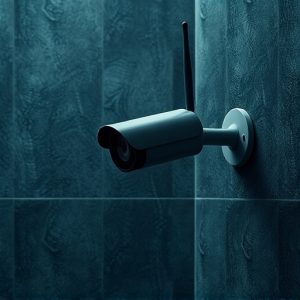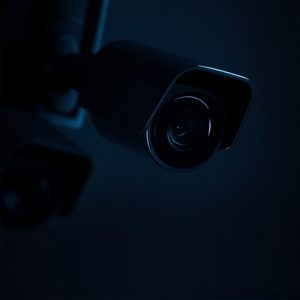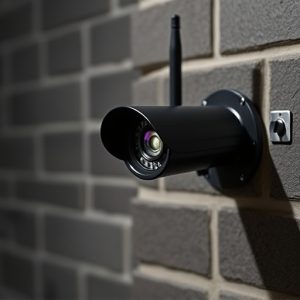Mastering Hidden Spy Camera Wireless Technology: A Complete Guide
Hidden spy camera wireless systems offer cutting-edge covert surveillance technology with advanced f…….
Hidden spy camera wireless systems offer cutting-edge covert surveillance technology with advanced features like motion-triggered recording, live remote viewing on various devices, and high-definition imagery. These compact, stealthy devices are ideal for discreet monitoring in both residential and commercial settings due to their wireless capabilities, allowing placement even in challenging locations. They provide real-time insights through high-quality video feeds without the need for physical cables and come equipped with additional features such as sound recording, infrared night vision, and remote pan, tilt, and zoom options. For installation, users should select a well-positioned yet inconspicuous location, ensuring clear visibility while maintaining a non-suspicious presence. Regular firmware updates and proper battery management are essential for optimal performance and security. Users must also comply with privacy laws and operate within legal boundaries to ensure ethical use of these devices. Navigating the legal landscape requires understanding the varying regulations by jurisdiction, which dictate when and where surveillance is permissible and mandate explicit consent from those recorded. It's crucial to respect privacy and personal boundaries in all uses of hidden spy camera wireless systems.
Exploring the multifaceted world of surveillance technology, this article delves into the intricate workings and applications of hidden spy camera wireless systems. We begin by shedding light on their stealthy design and capabilities in “Unveiling the Stealth of Hidden Spy Camera Wireless Systems: A Comprehensive Overview.” Subsequent sections, including “The Anatomy of Hidden Spy Camera Wireless Devices: Key Features and Capabilities,” guide readers through the technical aspects that make these systems both powerful and discreet. For those looking to implement such technology, “Installing and Operating Your Hidden Spy Camera Wireless: Best Practices for Discreet Monitoring” offers practical advice. Concluding with a critical perspective on legal and ethical considerations in “Legal Considerations and Ethical Use of Hidden Spy Camera Wireless Systems,” this article aims to provide a holistic understanding of hidden spy camera wireless systems and their role in modern surveillance.
Unveiling the Stealth of Hidden Spy Camera Wireless Systems: A Comprehensive Overview
Hidden spy camera wireless systems represent the pinnacle of covert surveillance technology, offering users the ability to capture footage without drawing attention. These sophisticated devices are engineered with stealth in mind, utilizing advanced wireless communication protocols to transmit video and audio data discreetly. The compact nature of these cameras allows for placement in a variety of environments, from residential spaces to commercial settings, where they can remain undetected while providing real-time monitoring capabilities.
The integration of wireless technology in hidden spy cameras has significantly advanced their functionality and application. Users can now position these cameras in areas that would be impractical or impossible for traditional wired cameras due to the limitations of cables. With a range of features, including motion-activated recording, remote live viewing through smartphones or computers, and high-definition video quality, these systems offer unparalleled surveillance solutions for security purposes, personal safety, and investigative work. The miniature size of these cameras, combined with their wireless functionality, makes them incredibly versatile, ensuring that they can be deployed in a myriad of scenarios where inconspicuousness is paramount.
The Anatomy of Hidden Spy Camera Wireless Devices: Key Features and Capabilities
Hidden spy camera wireless devices represent a sophisticated blend of surveillance technology and covert design, offering users a discreet means to monitor environments remotely. These devices are typically characterized by their compact form factors, which allow them to be concealed within everyday objects or installed in inconspicuous locations. A critical feature of these cameras is their wireless connectivity, enabling live streaming and data transmission over distances without the need for physical cables. This wireless capability ensures that users can access high-definition video feeds from anywhere, providing real-time insights into activities occurring within the camera’s view.
In terms of capabilities, hidden spy camera wireless systems often come equipped with advanced functionalities such as motion detection, sound recording, and infrared night vision. Motion detection alerts users to any movement within the camera’s field of view, ensuring that important events are not missed even when the device is unattended. Sound recording features allow for the capture of audio alongside video, offering a more comprehensive surveillance experience. Infrared night vision extends the operational capacity of these devices into low-light or completely dark environments, making them versatile tools for both residential and commercial security applications. With features like remote pan, tilt, and zoom capabilities, users can operate these cameras to cover wide areas, ensuring comprehensive coverage without compromising on stealth.
Installing and Operating Your Hidden Spy Camera Wireless: Best Practices for Discreet Monitoring
When installing a hidden spy camera wireless, discretion is paramount to ensure the device remains undetected and captures footage without intrusion. Begin by selecting a location that offers a clear field of view without raising suspicion. Position the camera at an angle that avoids casting shadows or obstructing views, yet still encompasses the desired area for surveillance. Use adhesive pads or mounting brackets designed for the model if installation on walls or ceilings is necessary; ensure the camera is secure and inconspicuously placed. For a more portable option, consider a hidden spy camera wireless with magnetic or suction cup attachments that can be easily moved or repositioned as needed.
Operating your hidden spy camera wireless involves initial setup through a compatible application on your smartphone or computer. Connect the camera to your Wi-Fi network to ensure a stable and secure connection, allowing for real-time monitoring from any location. Regularly update the firmware to enhance security features and performance. Set up motion detection and recording schedules to optimize storage space, alerting you only when activity is detected. Ensure that the battery—if not hardwired—is fully charged or connected to a power source to avoid missing critical events. Always adhere to legal surveillance guidelines and respect privacy; use your hidden spy camera wireless responsibly and ethically.
Legal Considerations and Ethical Use of Hidden Spy Camera Wireless Systems
When integrating hidden spy camera wireless systems into various environments, it is imperative to consider the legal framework within which they operate. Laws concerning surveillance vary significantly by jurisdiction, and users must ensure compliance with local, state, or federal regulations. The use of such devices is often subject to strict privacy laws designed to protect individuals’ rights. These laws dictate when, where, and how a hidden spy camera wireless can be lawfully employed, mandating clear consent from all parties being recorded. Non-compliance can lead to severe legal consequences, including fines or imprisonment, as well as the potential for civil litigation from affected individuals.
Moreover, beyond adhering to legal stipulations, ethical considerations must be at the forefront when deploying hidden spy camera wireless systems. The decision to monitor and record should be made with the utmost respect for privacy and personal boundaries. Ethical use prioritizes the protection of individuals’ dignity and autonomy, ensuring that recording is confined to contexts where it serves a legitimate purpose, such as enhancing security or monitoring for health and safety reasons. Users must always balance their need for surveillance with the rights of others, upholding trust and integrity in their deployment of this technology. Transparency about when and how footage is used, stored, and accessed is also crucial to maintaining ethical standards.


